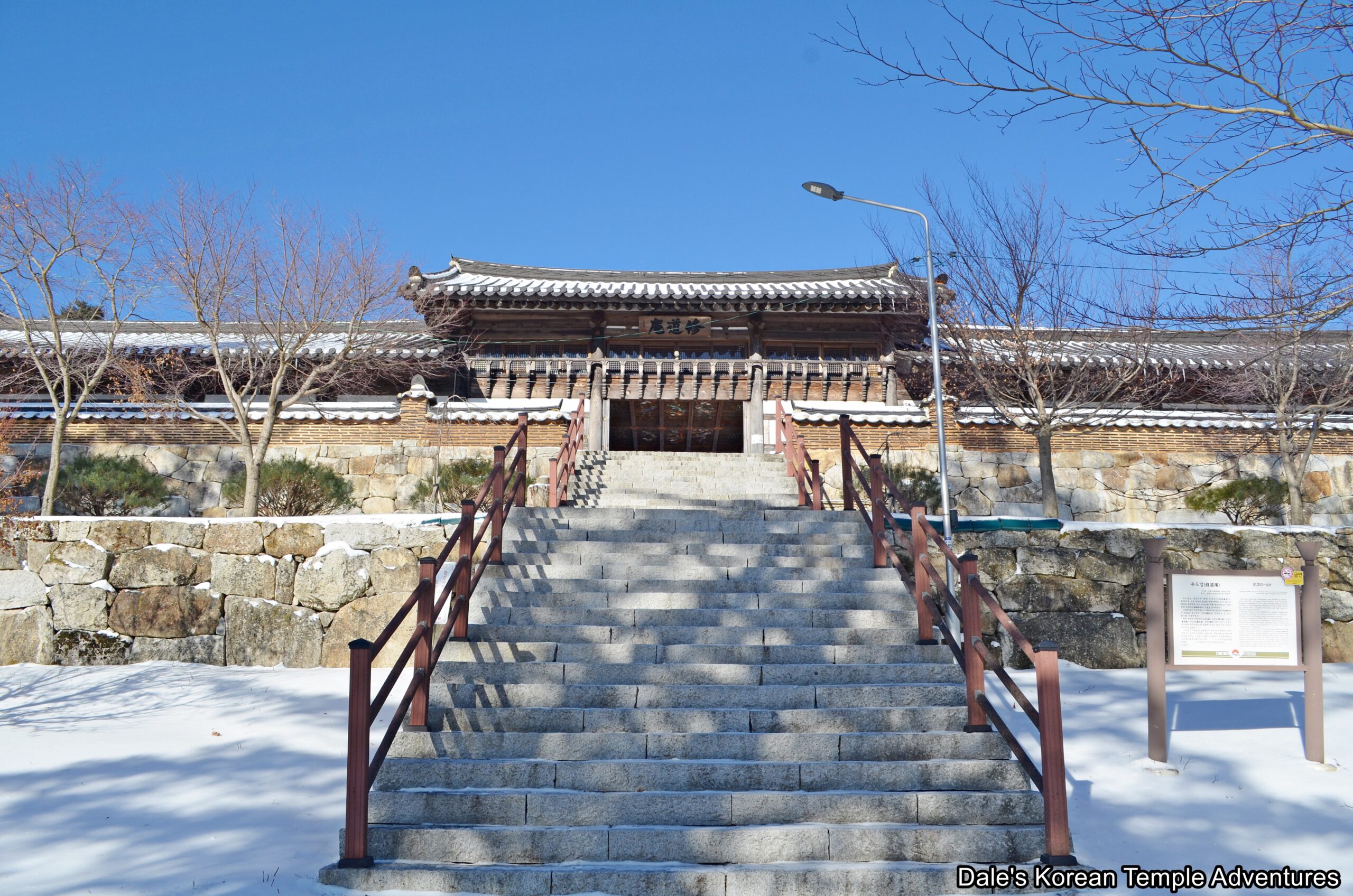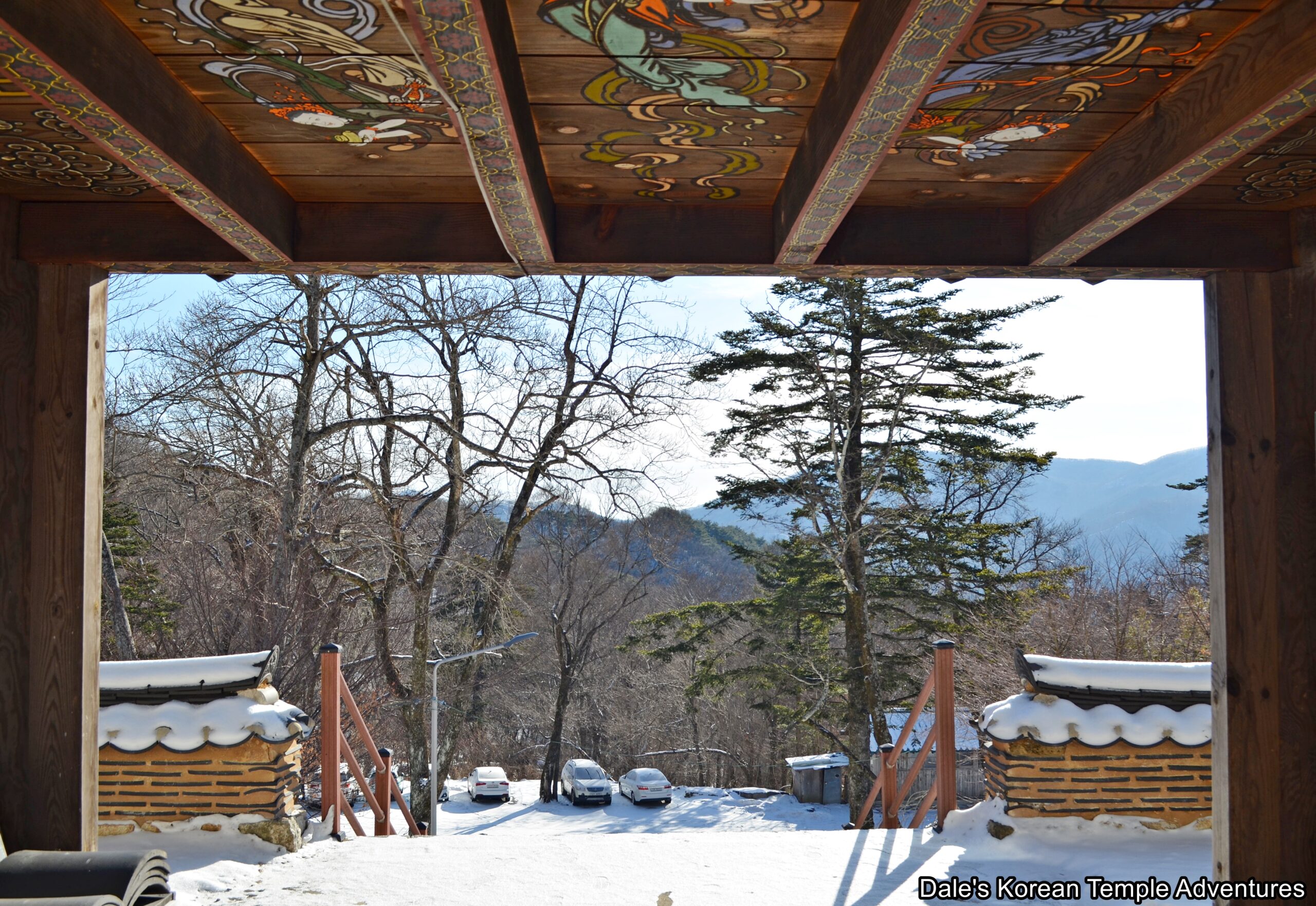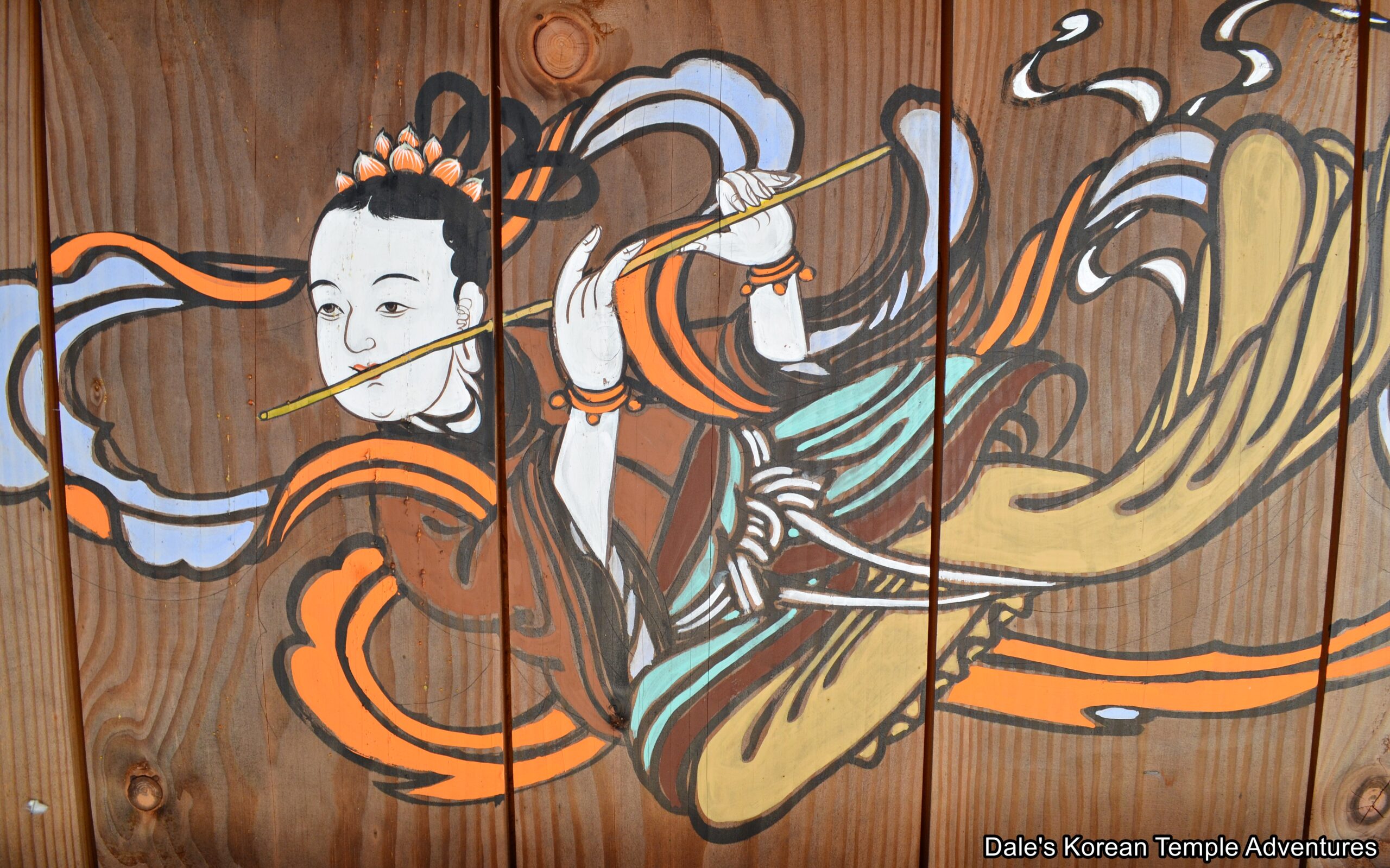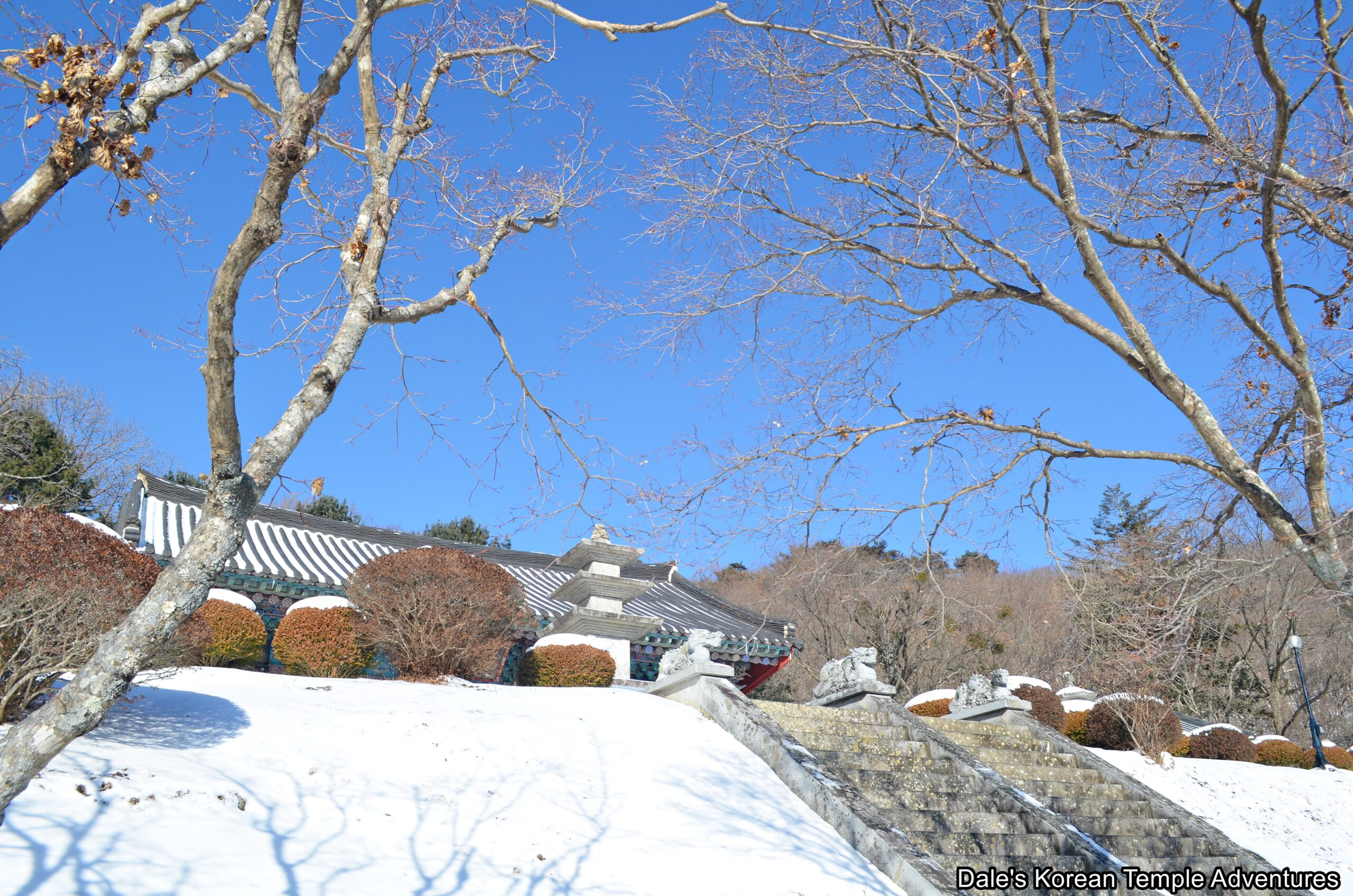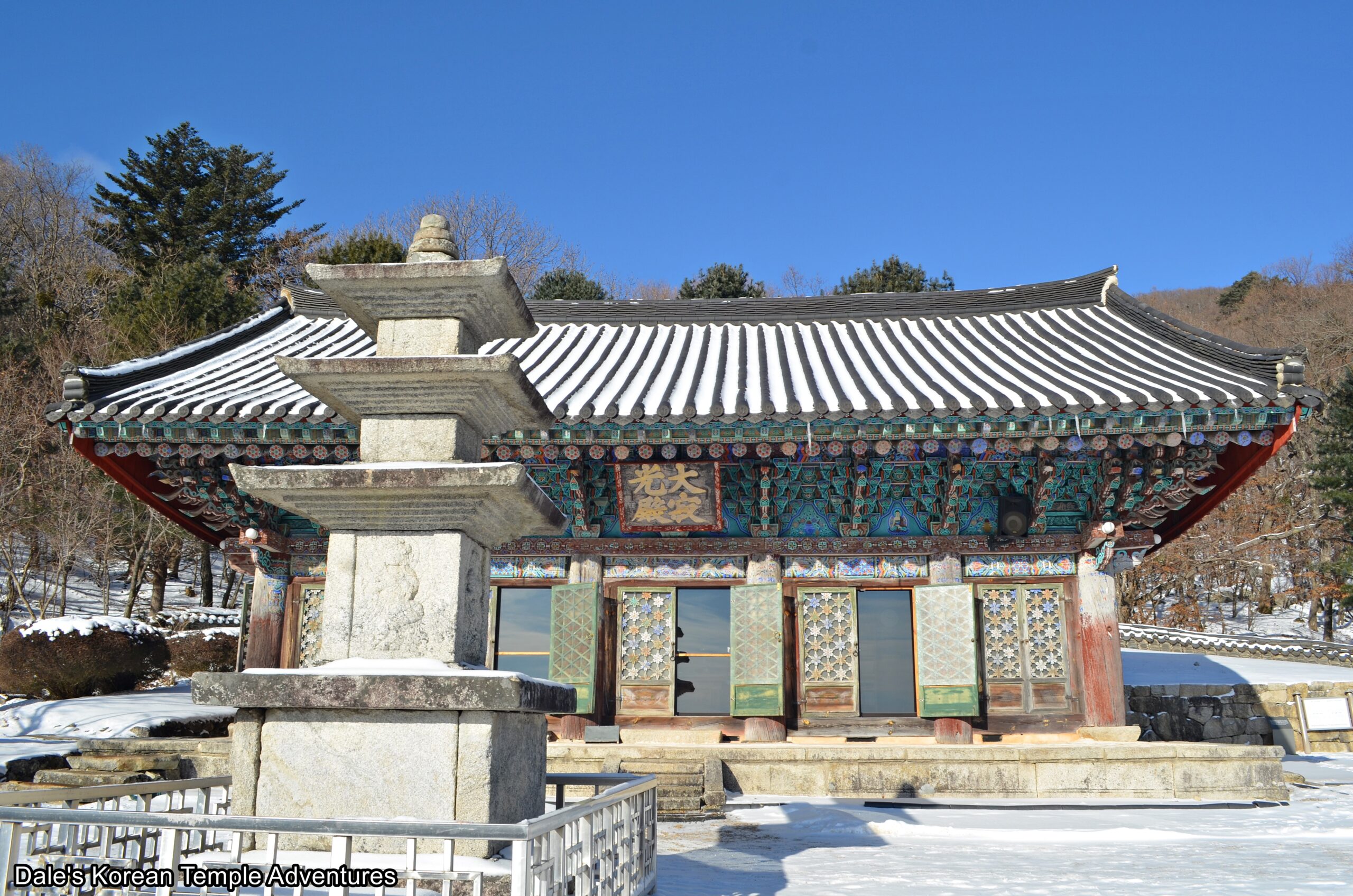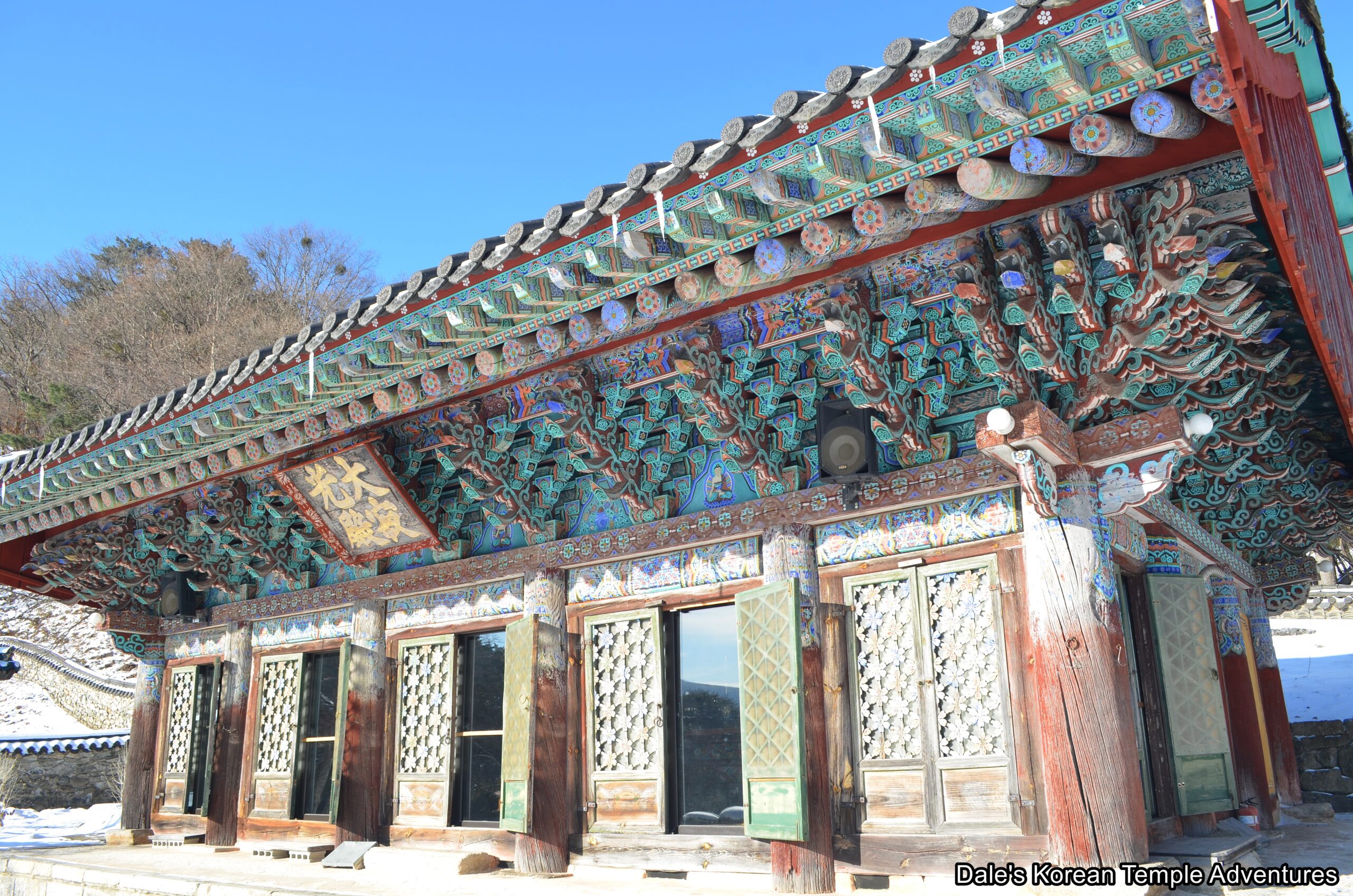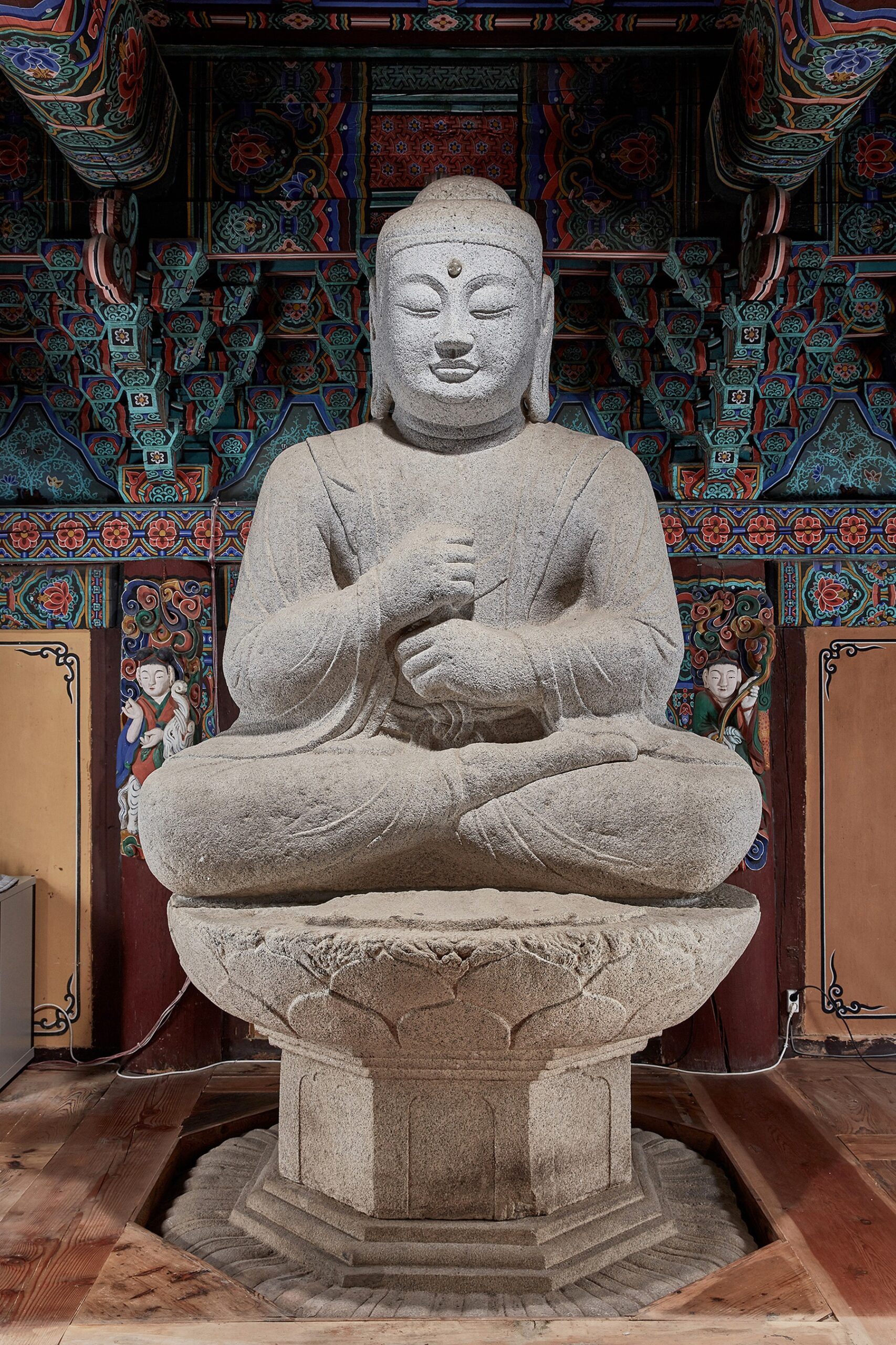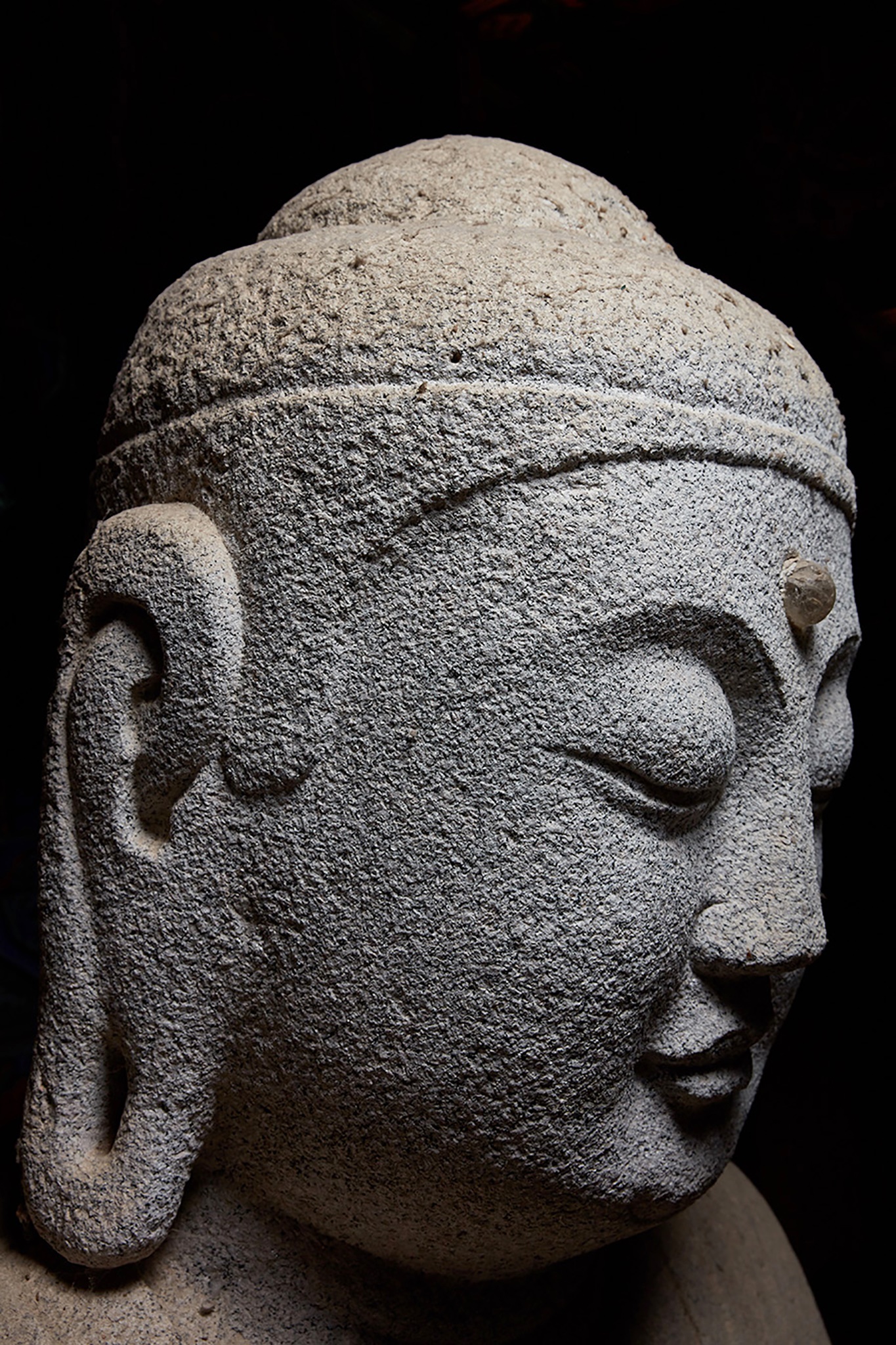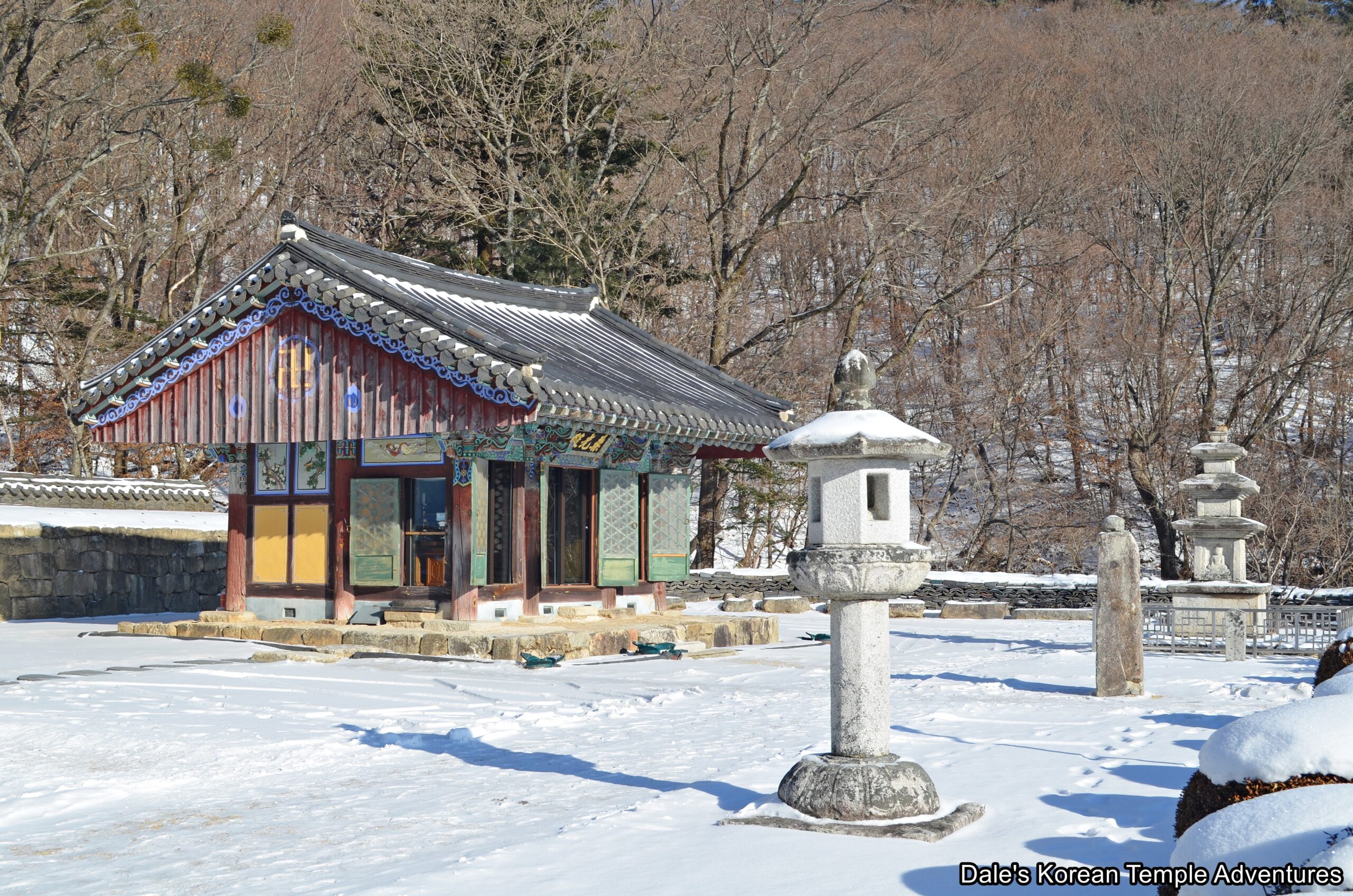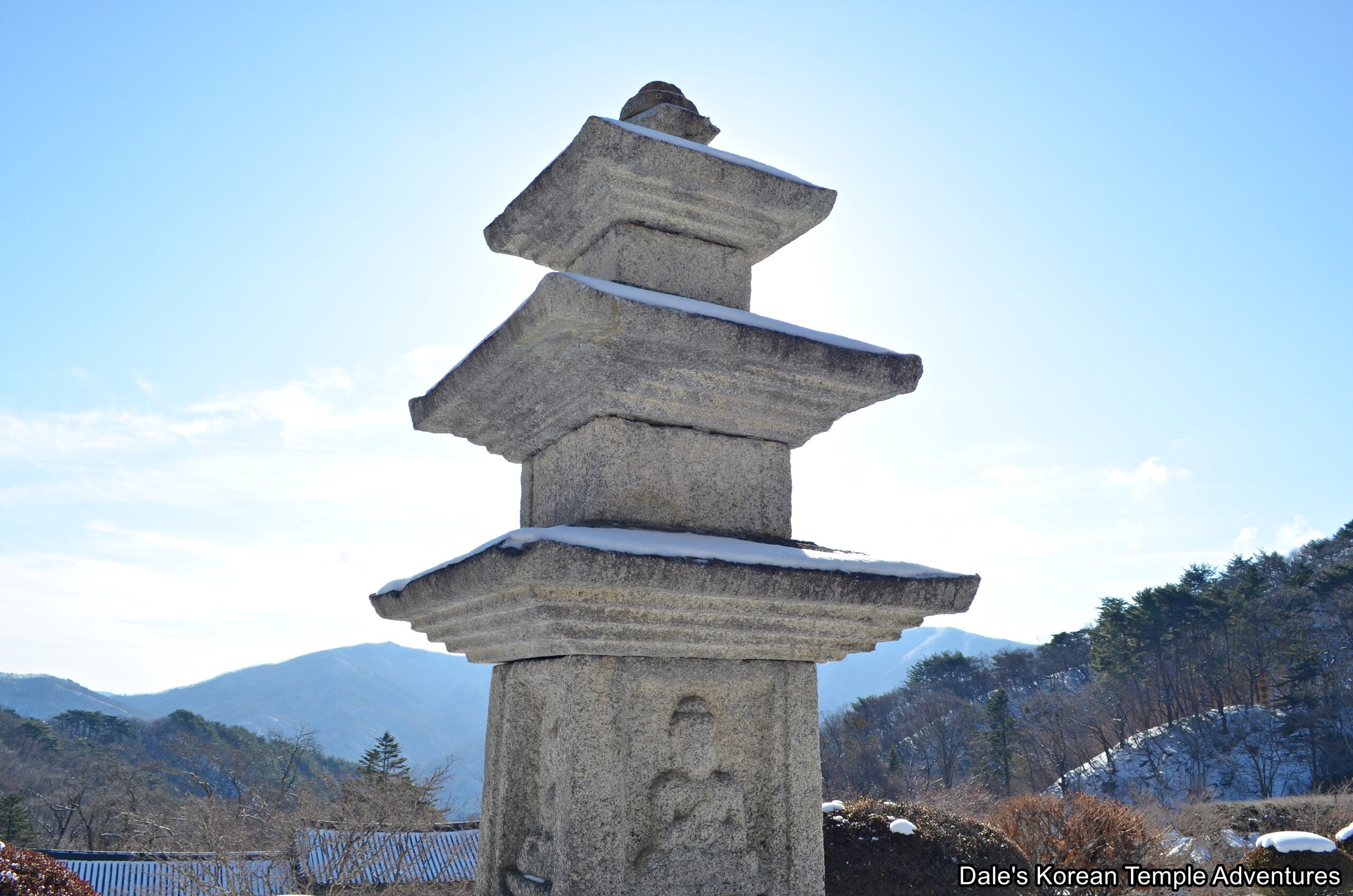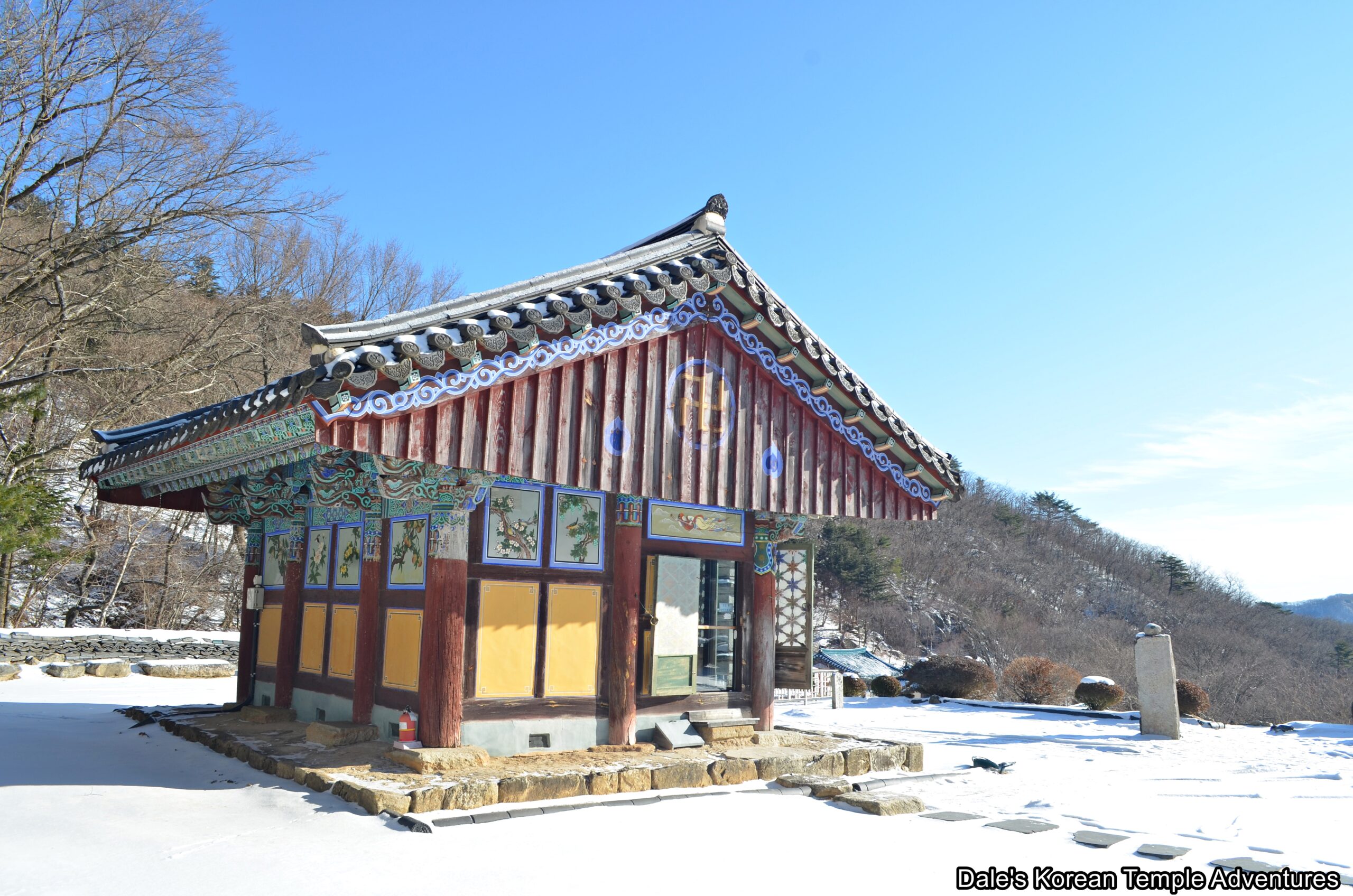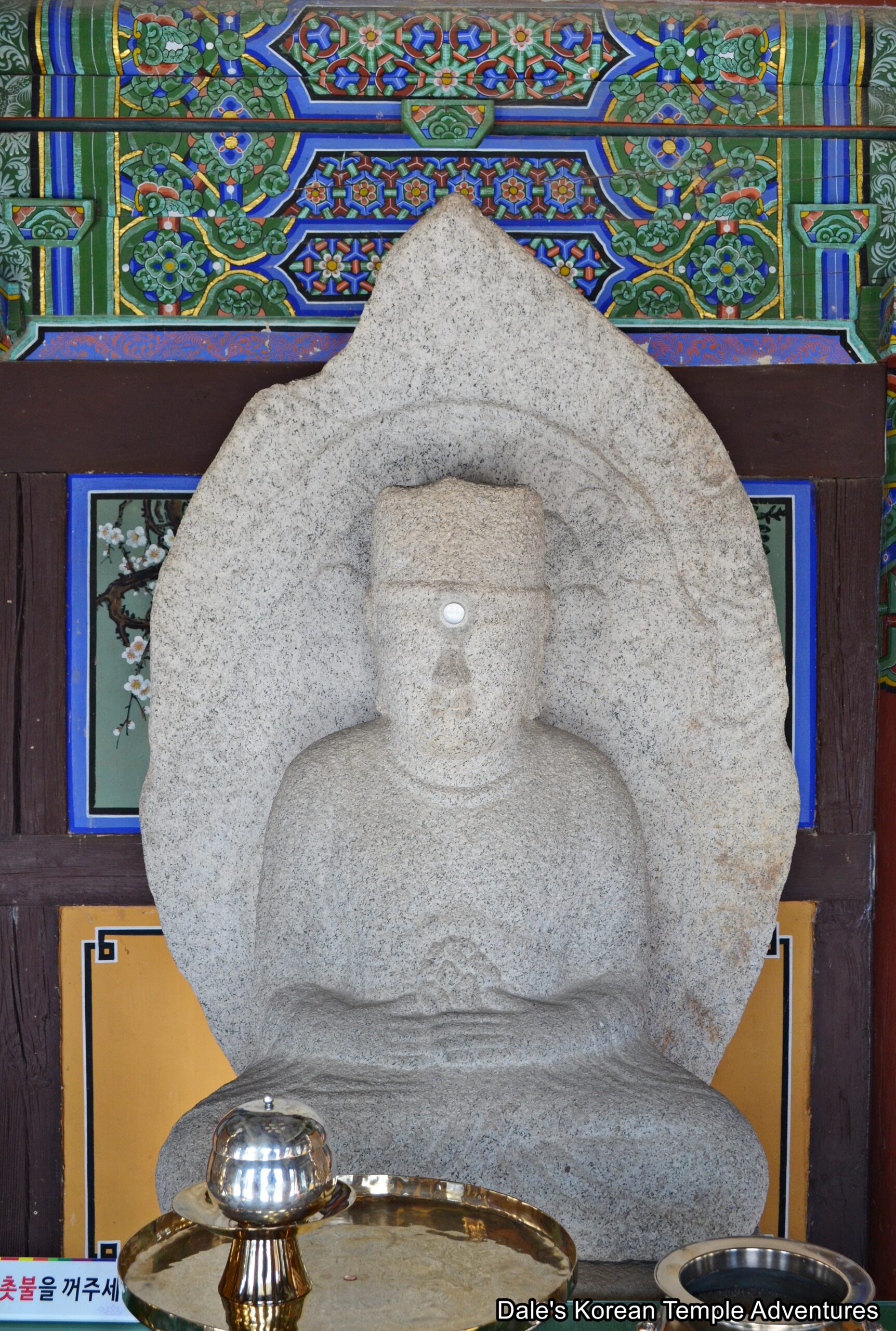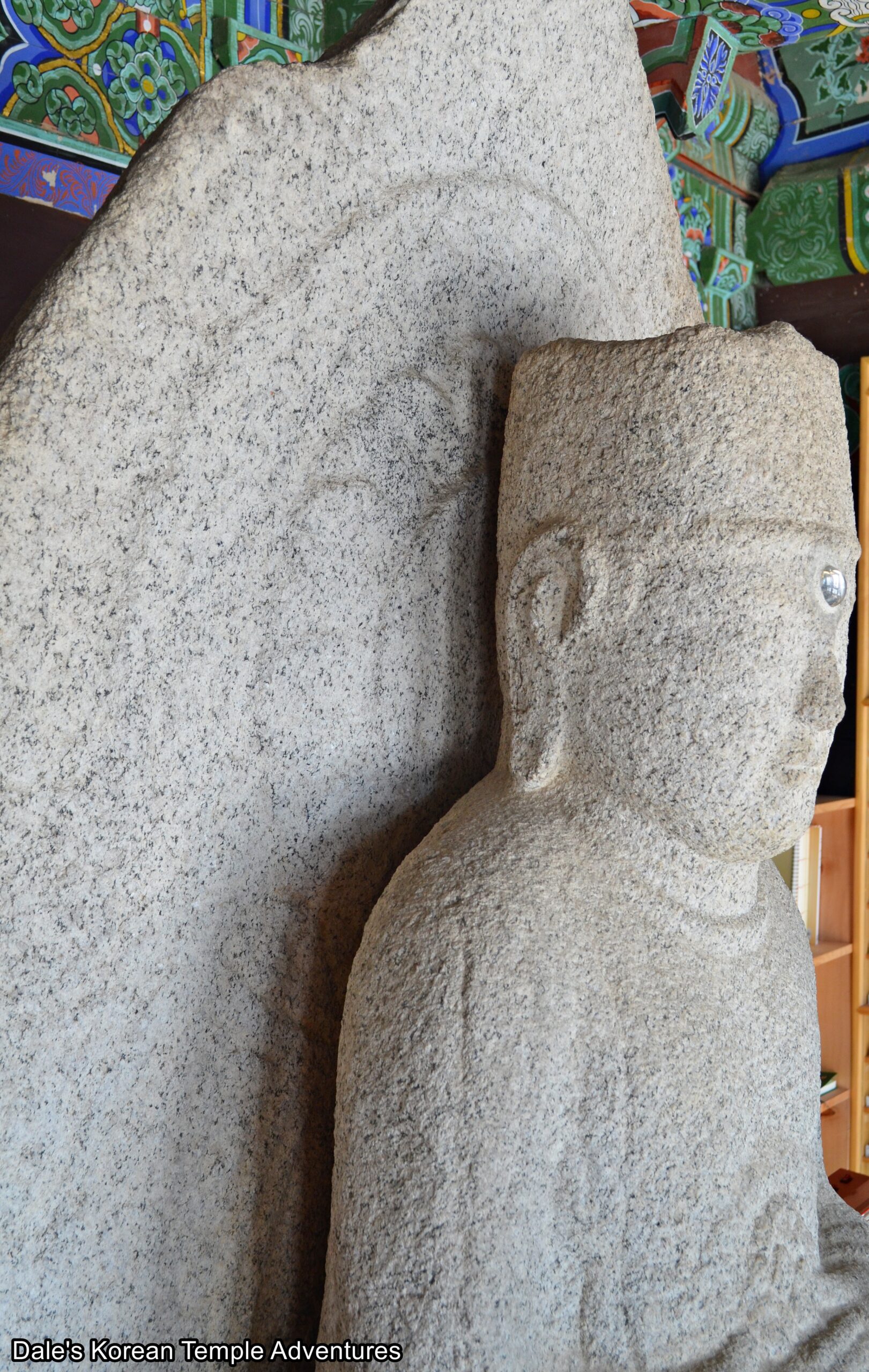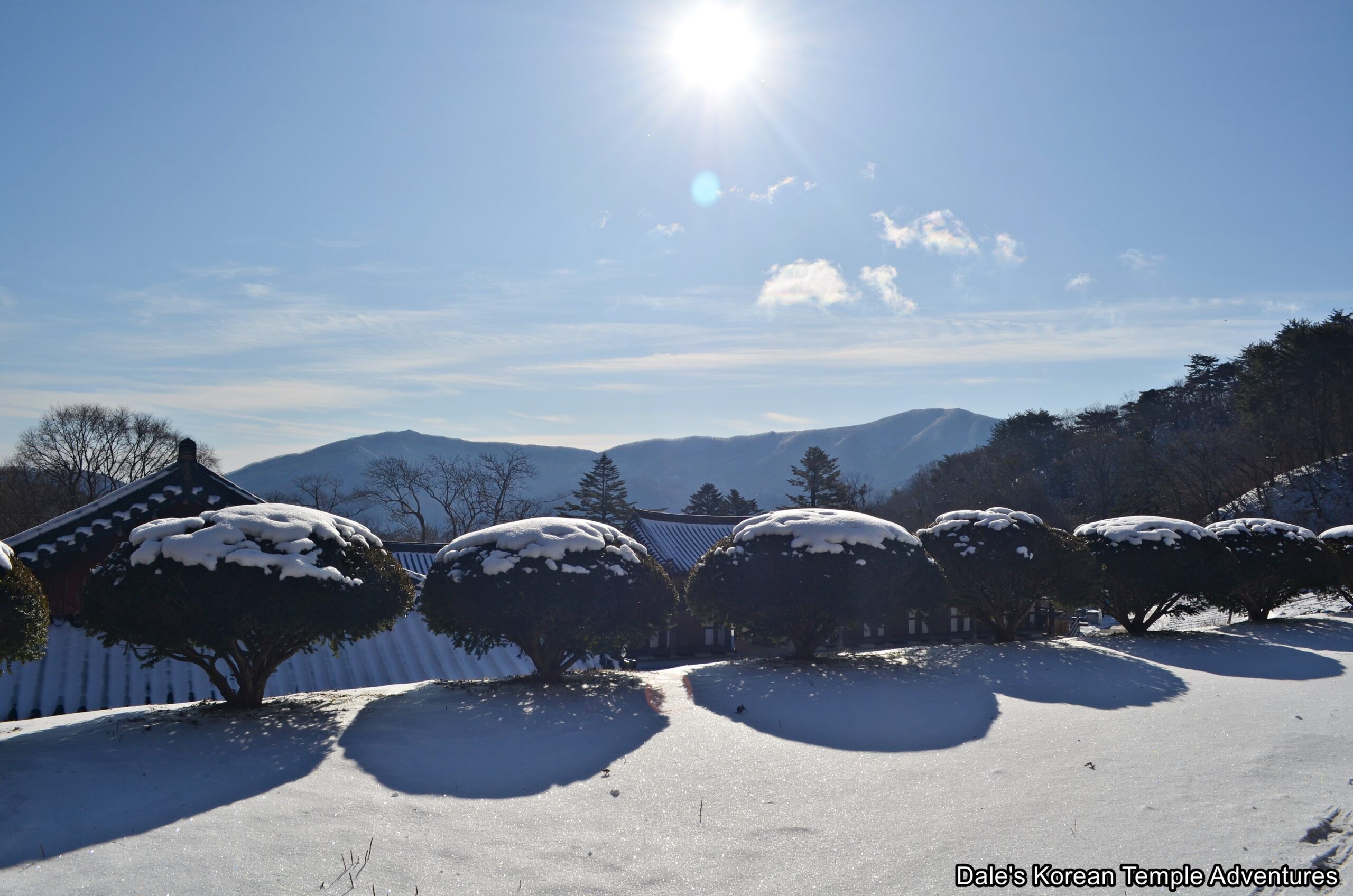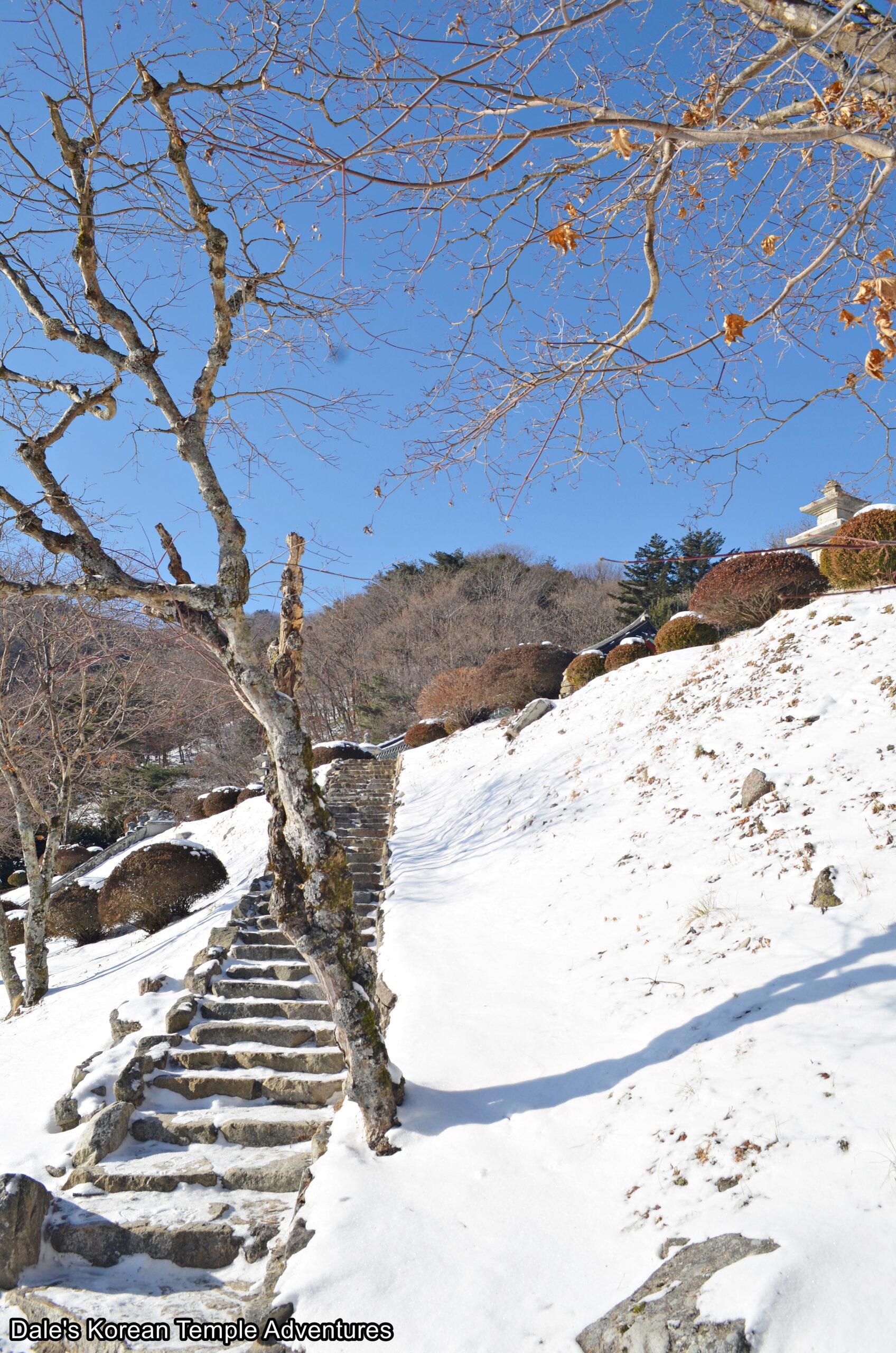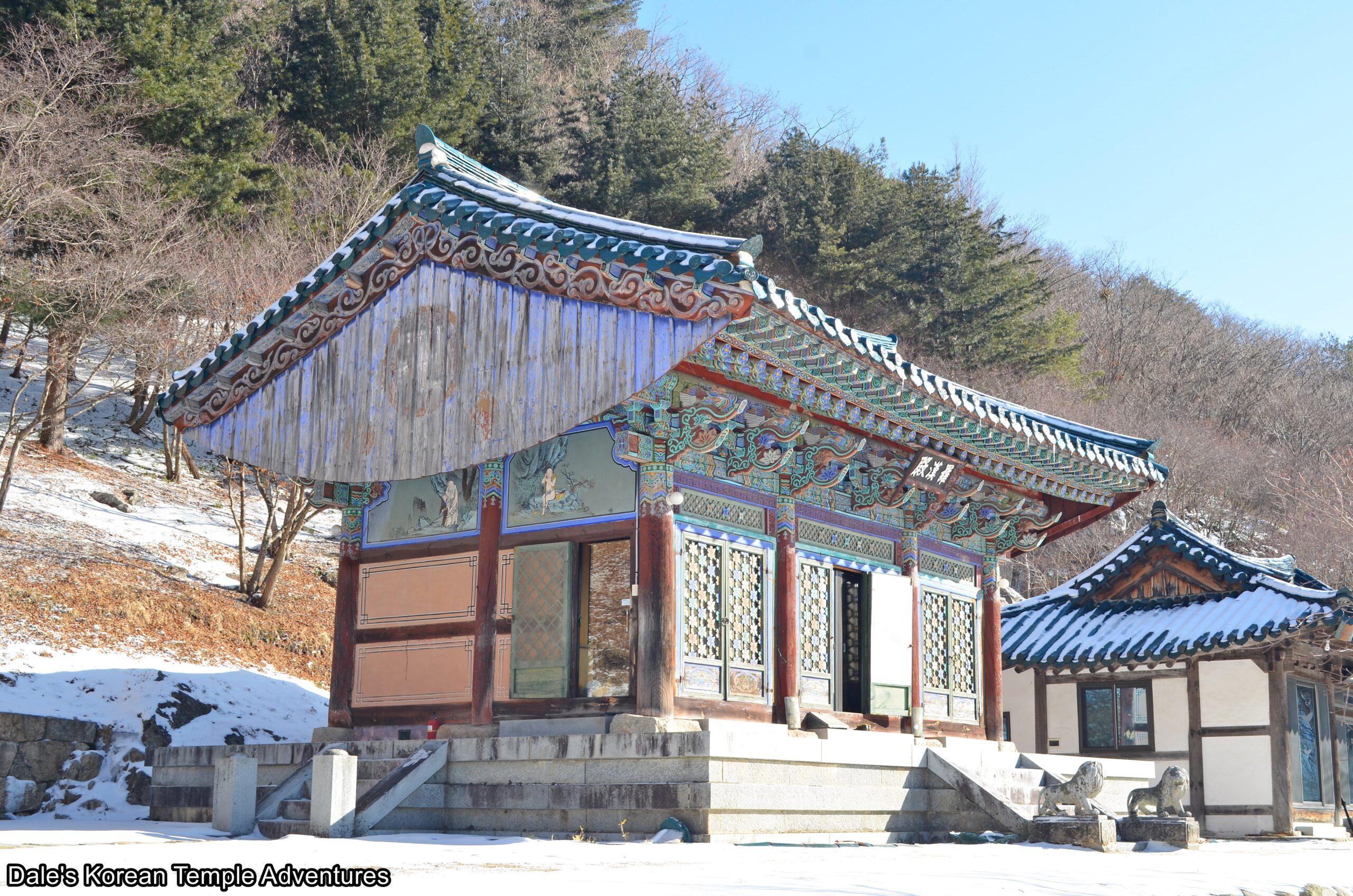Sudoam Hermitage – 수도암 (Gimcheon, Gyeongsangbuk-do)
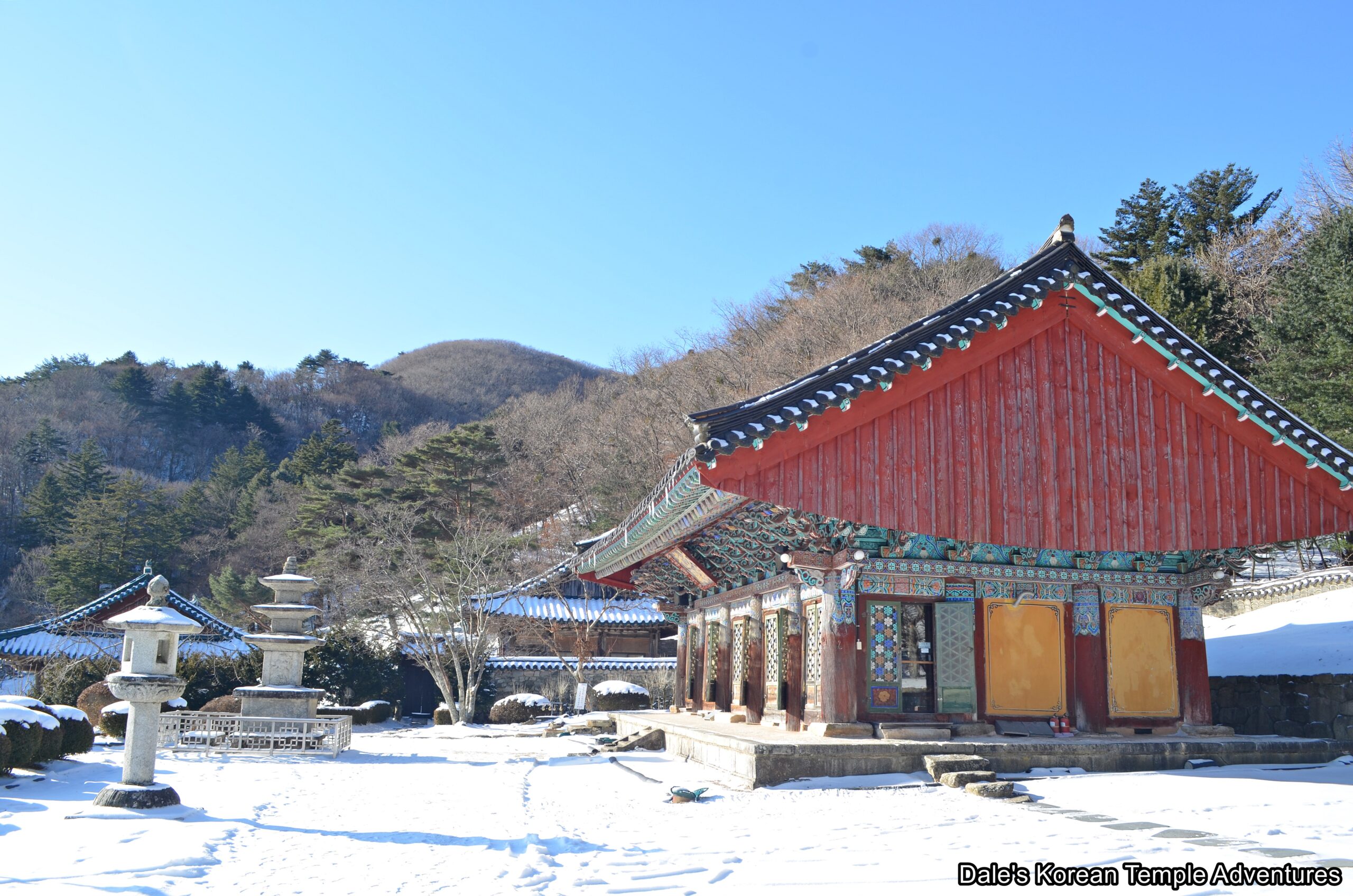
Hermitage History
Sudoam Hermitage is a hermitage that belongs to Cheongamsa Temple in Gimcheon, Gyeongsangbuk-do. The hermitage is located south of the main temple on Mt. Sudosan (1,317.3 m). Sudoam Hermitage means “Practicing the Way Hermitage” in English. Like Cheongamsa Temple, Sudoam Hermitage was founded by Doseon-guksa (826-898 A.D.) in 859 A.D. Originally, the hermitage belonged to Ssanggyesa Temple. However, throughout the centuries, very little is known about the hermitage’s history after it was first founded. Later, Sudoam Hermitage was completely destroyed by fire in 1894 during the Donghak Peasant Revolution (1894-95). In 1900, the hermitage was rebuilt, which was around the same time as Cheongamsa Temple was rebuilt, as well. Sudoam Hermitage was rebuilt at this time by the monk Poeung-hwasang. The hermitage is also where Gyeongheo (1849–1912) and Hanam Jungwon (1876-1951) first met. It’s also where the monk Kusan (1909-83) gained his initial enlightenment.
In total, Sudoam Hermitage is home to three Korean Treasures. They are the “Stone Seated Bodhisattva at Sudoam Hermitage of Cheongamsa Temple,” which is Korean Treasure #296; the “East and West Three-Story Stone Pagodas at Sudoam Hermitage of Cheongamsa Temple,” which is Korean Treasure #296; and the “Stone Seated Vairocana Buddha at Sudoam Hermitage of Cheongamsa Temple,” which is Korean Treasure #307.
Hermitage Layout
From the hermitage parking lot, you can look up and see the Boje-ru Pavilion. The pavilion is quite long with dorms to the right and left of the central entryway to the hermitage grounds. Passing through the entryway, and if you look up, you’ll notice Bicheon (Flying Heavenly Deities) painted on the ceiling of the structure. And if you look back, you’ll notice the rolling hills and valley off in the distance.
Having passed through the Boje-ru Pavilion, you’ll now be standing in the upper parking lot. To your direct right is an administrative building, but it’s straight ahead that you’ll want to go. You’ll see a long set of stairs fronted by three stone lions. At the top of these stairs, you’ll find three more statues. These stone statues are dragon statues. At the top of these stairs, and a little further up the pathway, you’ll see another set of stairs. These stairs are fronted by two book-ending stone lanterns and a central stone lion. Climbing these next set of stairs, and past the three additional dragon statues, you’ll come face-to-face with one of the two pagodas that comprise the “East and West Three-Story Stone Pagodas at Sudoam Hermitage of Cheongamsa Temple.”
This first pagoda is the west pagoda. The east pagoda is located about fifty metres away. And between the two pagodas are a stone lantern and a stone marker that’s inscribed with hanja characters. As for the pagodas, they are twin pagodas. It’s believed that these pagodas were made by Doseon-guksa. Because of the narrow ridge that the shrine halls and pagodas are located on at Sudoam Hermitage, they are close in proximity to both shrine halls in this area. The west pagoda is a three-story structure that stands on a two-story pedestal. The second tier is much smaller than the first tier. A column pattern is engraved along the edge of the first body stone. Also appearing in this stone is an image of a seated Bodhisattva relief. The roof stones to each story are thinner and broader than the east pagoda’s.
As for the east pagoda, it stands on a single tier pedestal. It also has three stories. The side of each pedestal is engraved with a column pattern. What makes this pagoda different than its western neighbour is that the east pagoda’s first body narrows towards the top. Also, the Bodhisattvas in the first body stone are engraved inside a rectangular box. As for the second and third body stones, they are engraved with column patterns on all sides. The roof stones are slightly thicker and less thin than the west pagoda at Sudoam Hermitage. Judging by the design and carvings on the pagodas, they are both believed to date back to the middle of the Silla Dynasty (57 B.C. – 935 A.D.).
Backing the west pagoda is the hermitage’s Daejeokgwang-jeon Hall. The exterior walls to the main hall are adorned with standard dancheong colours. However, the intricate eaves work is quite extensive and colourful. Stepping inside the Daejeokgwang-jeon Hall, you’ll find a solitary stone statue of Birojana-bul (The Buddha of Cosmic Energy). This is the “Stone Seated Vairocana Buddha at Sudoam Hermitage of Cheongamsa Temple.” The seated image is 2.51 metres in height, and it appears to be from late Unified Silla Dynasty (668-935 A.D.). Appearing on the top of Birojana-bul’s head is a topknot on top of a bald head. It’s both small and obvious. The face is square and plump with serene half-closed meditative eyes. It has long earlobes that come down to its shoulders. The robe covers both of its shoulders. The right hand covers the left index finger. This mudra (ritualized hand gesture) is known as the “diamond fist.” The statue rests upon a pedestal that’s divided into three parts. The bottom part is octagonal with an upside down lotus flower relief. The middle part of the pedestal is 45 cm in height with octagonal panels. There are two lines of lotus flowers crossing in a half circle at the top. There are also three lion images and a dragonhead carved at the front in the upper part of the pedestal, as well.
To the right of the Daejeokgwang-jeon Hall is Yakgwang-jeon Hall. The exterior walls are adorned with various murals that include flowers, birds, and Bicheon (Flying Heavenly Deities). The dancheong is vibrant. And the floral latticework that adorns both the front and side doors of this shrine hall are intricate.
Stepping inside the Yakgwang-jeon Hall, you’ll find even more murals of flowers and birds. But the main highlight to the shrine hall is the “Stone Seated Bodhisattva at Sudoam Hermitage of Cheongamsa Temple.” This seated stone statue is believed to date back to the early Goryeo Dynasty (918-1392). Often this statue is mistaken for a Bodhisattva because of the crown it wears. However, because of the mandorla, pedestal, and other features of the statue, this statue is in fact an image of the Buddha. A lot of the features of the face have faded over time. Both shoulders are covered by its robe. The hands are joined together. The mandorla that surrounds the entire body and head of the statue are adorned with lotus flower designs and flame patterns. The top of the square pedestal that the statue rests upon is shaped like a lotus flower. There are panel decorations in the middle part of the pedestal. And the bottom part of the pedestal is shaped like an upside down lotus flower. The statue is absolutely stunning.
To the far left of these shrine halls is the hermitage’s farmland as well as the monks’ dorms. And to the right of these shrine halls, and to the right of the upper parking lot, you’ll find a trail that leads you towards the Nahan-jeon Hall at Sudoam Hermitage. The exterior walls of the Nahan-jeon Hall are adorned with Nahan (The Historical Disciples of the Buddha). And up near the roof of the structure, you’ll see a fading manja image. Stepping inside the Nahan-jeon Hall, you’ll see a collection of sixteen colourful stone Nahan statues housed inside glass enclosures. And on the main altar, there’s a white triad of statues centred by a stone image of Seokgamoni-bul (The Historical Buddha). And joining this central image on either side are white, crowned images of Mireuk-bul (The Future Buddha) and Yeondeung-bul (The Past Buddha).
How To Get There
The easiest way to get to Sudoam Hermitage from the Gimcheon Intercity Bus Terminal is to simply take a taxi. However, the taxi ride will take 50 minutes and cost 50,000 won (one way), so this probably isn’t an option.
If you want to take public transportation from the Gimcheon Intercity Bus Terminal, you’ll need to board Bus #886-2. The bus ride will take about 60 minutes over 52 stops. You’ll need to get off at the “Pyeongchon – 평촌” stop. From this stop, you’ll need to walk an incredible 8 km up a mountain. In total, the hike should take at least 2 hours. So this probably isn’t an option either.
Simply put, the easiest and best way to get to this hard to reach hermitage is to simply have your own mode of transportation, but that isn’t always possible. The hermitage is definitely worth a visit, but it’s one of the harder ones to get to.
Overall Rating: 7/10
Sudoam Hermitage is one of the most impressive hermitages that you’ll see in Korea. It has three Korean Treasures, it’s beautifully situated, and it has a rich modern monastic history. The only drawback about the hermitage is that it’s hard to get to. But this aside, you really couldn’t ask for much more from a Buddhist hermitage in Korea. It simply checks all the boxes scenically, monastically, and artistically.
